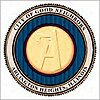Arlington Heights, Illinois
| Arlington Heights, Illinois | ||
|---|---|---|
| Village | ||
| Village of Arlington Heights, Illinois | ||

Evergreen Avenue in Downtown Arlington Heights
|
||
|
||
| Motto: City of Good Neighbors | ||
 Location in Cook County and the state of Illinois. |
||
 Location of Illinois in the United States |
||
| Coordinates: 42°5′42″N 87°58′51″W / 42.09500°N 87.98083°WCoordinates: 42°5′42″N 87°58′51″W / 42.09500°N 87.98083°W | ||
| Country |
|
|
| State | Illinois | |
| Counties | Cook | |
| Township | Wheeling | |
| Incorporated | 1887 | |
| Government | ||
| • Type | Council-manager | |
| • Mayor | Thomas Hayes | |
| Area | ||
| • Total | 16.6 sq mi (43.1 km2) | |
| • Land | 16.6 sq mi (43.0 km2) | |
| • Water | 0.04 sq mi (0.1 km2) | |
| Elevation | 700 ft (200 m) | |
| Population (2010) | ||
| • Total | 75,101 | |
| • Density | 4,500/sq mi (1,700/km2) | |
| Standard of living | ||
| Time zone | Central | |
| ZIP code(s) | 60004, 60005, and 60006 (PO BOX Only) | |
| Area code(s) | 847 and 224 | |
| Geocode | 02154 | |
| Website | www |
|
Arlington Heights is a town in Cook County and Lake County in the U.S. state of Illinois. A suburb of Chicago, it lies about 25 miles (40 km) northwest of the city's downtown. The population was 75,101 at the 2010 census. It is the most populous community in the United States that is incorporated as a "village", although it is not far ahead of its nearby Illinois neighboring villages of Schaumburg and Bolingbrook and adjacent Palatine.
Arlington Heights is known for Arlington Park Race Track, home of the Arlington Million, a Breeders' Cup qualifying event; it also hosted the Breeders' Cup Classic in 2002. The village is also home to the Arlington Heights Memorial Library, which has one of the largest collections in the state.
Arlington Heights lies mostly in the western part of Wheeling Township, with territory in adjacent Elk Grove and Palatine townships, in an area originally notable for the absence of groves and trees. The General Land Office began selling land here in 1835. In 1853, William Dunton, originally from Oswego, New York, persuaded the Illinois & Wisconsin Railroad to make a stop here, and laid out a town called Dunton. Dunton Avenue, named after William Dunton, is the village's base line that splits addresses east and west, with Campbell Street splitting north and south.
...
Wikipedia

